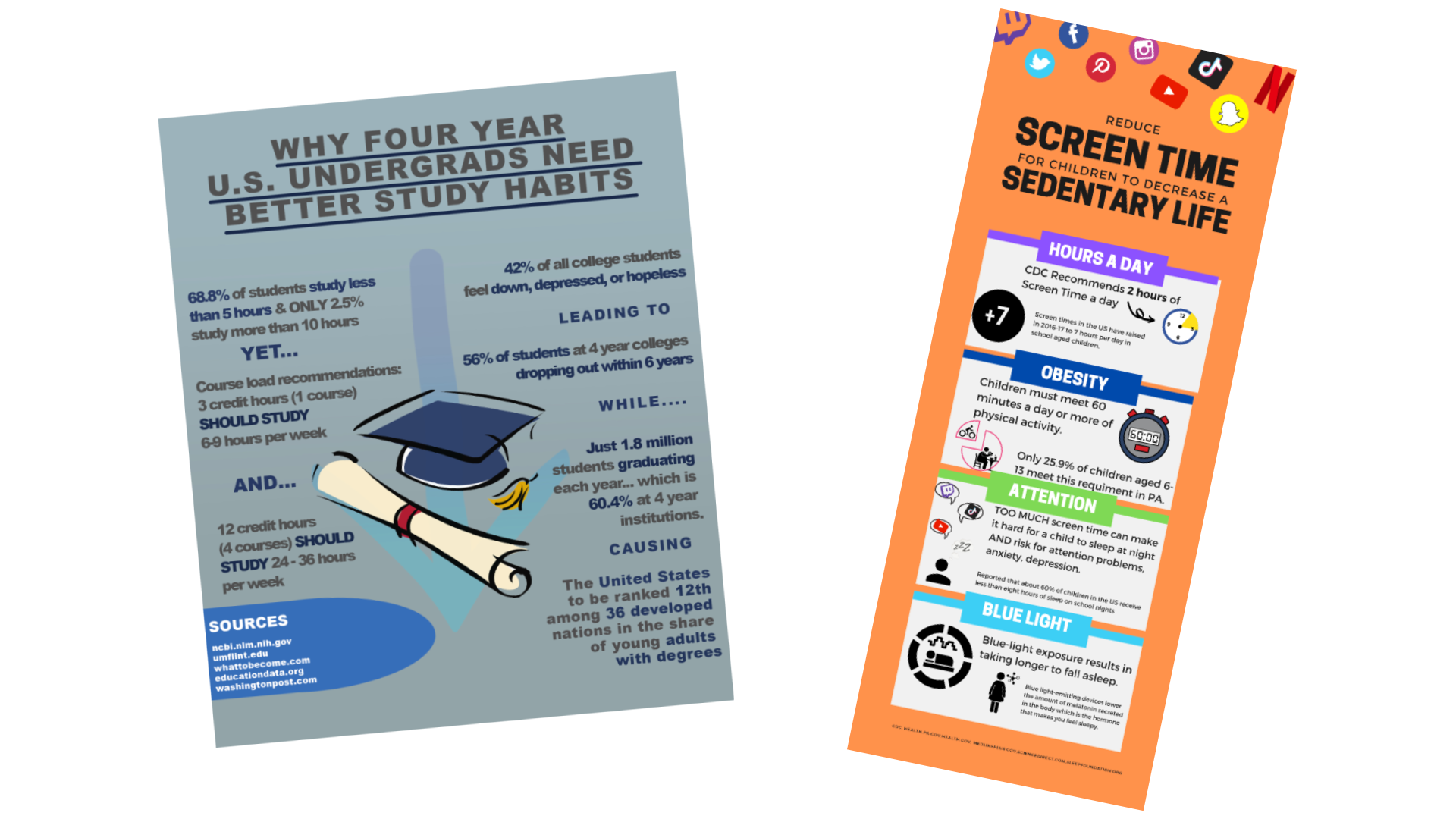Every time we look at our phones, at an advertisement or even at the walls of public buildings, we are absorbing information in the form of infographics. These handy little digital flyers, usually either phone-shaped or square, can share helpful facts and tips about anything: dietary guidelines, step-by-step instructions, or even how to vote. As students and future leaders of the media and communication sphere, more and more Klein College of Media and Communication students are learning how to make these engaging image-based communication tools, whether they be for class, extracurricular activities or their own personal social media accounts.
The idea for infographics was born in the world of poster design, then developed in bite-size form during the social media boom, where they are arguably in their peak today. Students become adjusted to conveying information in these easily-readable formats early on in their coursework, particularly in Adjunct Professor of Communication and Social Influence (CSI) Hakan Franson’s Communication and Behavior Change class.
“In a time when we are all bombarded with noisy information and messages, our students look to effective techniques, such as infographics, to communicate messages and influence positive behavioural change,” Franson says.
Andy Lan, an ROTC freshman CSI major, is enrolled in the course as a temporary replacement for Introduction to CSI, a foundational course that is also required for his major. The infographic assignment is meant to prepare the class for their final portfolio project at the end of the semester, which will be a cumulation of these smaller projects on a much larger scale. These infographics also submitted it to the CSI Instagram page, which had put out a call for student work to promote.
Lan and his group chose to cover study habits for undergraduates in their infographic, drawing on statistics and tips throughout various sources. They decided to focus their project on this topic because they recognized how relevant it was, especially for first year students like themselves trying to transition to the pace of virtual college life.
“Being interested in civic engagement, it’s really easy nowadays to just make something and post it, make it shareable. It’s becoming the grassroots of our young generation,” Lan said, referring to colorful pastel infographics particularly popular with activists on Instagram.
He said he can see where these skills could carry over into his future career in civic engagement, citing the popularity of infographics with activists and politicians on social media platforms.
Examples of the students’ infographics are visible above, and keep a lookout for more student work on the CSI Instagram page.

